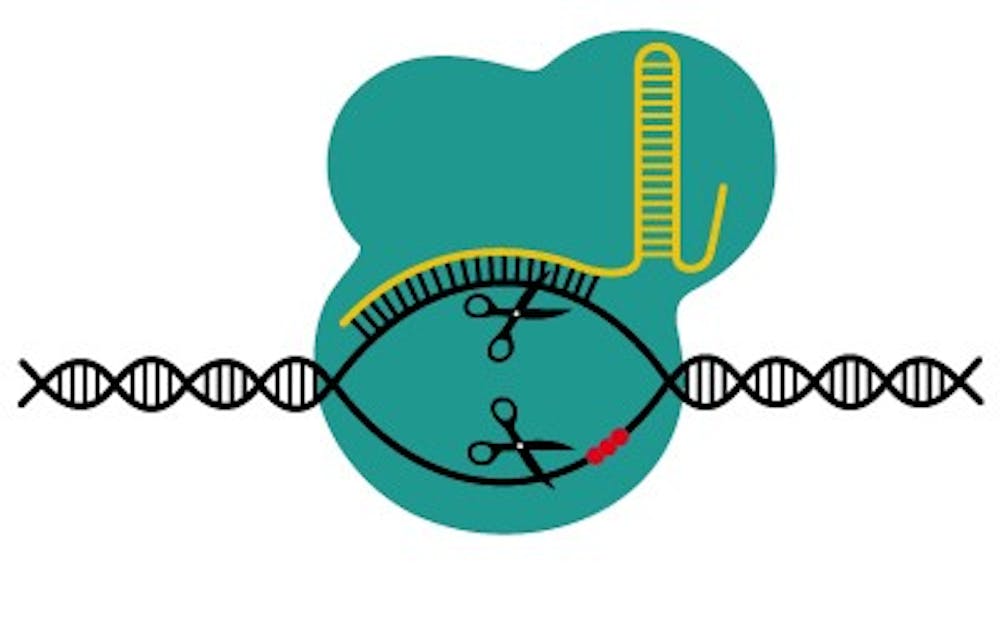Armed with a seven-figure grant, Duke researchers hope to better understand how DNA changes can cause cancer.
Brought together by a new research project funded through a four-year, $2 million National Science Foundation grant, four professors of biomedical engineering are looking to look deeper into the structure of DNA and how it impacts cancer development.
Charles Gersbach, Rooney Family Associate professor of biomedical engineering, Brenton Hoffman, assistant professor of biomedical engineering, Michael Rubinstein, professor of mechanical engineering and materials science and professor of biomedical engineering, and Xiling Shen, Hawkins Family Associate professor of biomedical engineering, will all combine their individual knowledge of gene editing, mechanical engineering and computational modeling.
The research is supported by the NSF Directorate for Engineering's Emerging Frontiers in Research and Innovation program, which aims to address large-scale engineering challenges.
The researchers hope to better understand gene function and how to control DNA structure, as well as the interaction of chromatin with DNA, which can cause cancer development in some conditions. The team is investigating how changes to the cell nucleus's structure are expressed.
If the three-dimensional structure within the nucleus is perturbed, then the expression level of the various proteins produced is altered, which can impact cell signaling and behavior. This can lead to a disease state.
Using their newly developed technology, the team has discovered that these structures are mutable.
As for each team member's role, Rubinstein makes predictions of the molecular model, Hoffman works on technology to test the model and Gersbach develops imaging tools, Hoffman said.
Combining their skills, they hope to make improved tools to use with Shen's models to start understanding how epigenetic structure regulates the expression of MIC, a protein found in cancer cells, especially colon cancer.
“There’s a structure, we can change it. We are looking at how and should you do that and then what can it do,” Hoffman said.
This is where Gersbach’s variation of the CRISPR-Cas9 system—engineered to manipulate the epigenome at very specific sites modeled by Rubinstein—comes into play. The team then uses Hoffman's imaging technology to learn the effects of epigenome changes. Through this, they will be able to change the structure of the chromatin within DNA and see how different changes can cause cells to become cancerous in certain situations.
“There’s a three-dimensional structure within the genome and that structure effects protein level expression. It's not just cool how it's arranged. It has consequences for how much and what proteins are produced," Hoffman said.
Hoffman explained that the feedback-loop nature of his collaboration with Rubenstein makes this investigation unique.
"He can make predictions, his prediction will hopefully be something that we can directly measure and then by using technology we can see essentially the two chromatin points come close together and then my data will help inform his model. And that's never been done,” Hoffman said.
Previous research conceptualized chromatin structure as random. Scientists now know that this is not the case and are looking to understand how different formations have different effects on the protein produced from DNA.
This can allow a better understanding of which part of DNA expresses proteins and how that can contribute to the development of diseases like cancer.
“From a scientist's point of view, it's great to understand that basic structure. From a societal point of view, it's great to use that understanding to do something,” Hoffman said.
Get The Chronicle straight to your inbox
Signup for our weekly newsletter. Cancel at any time.

